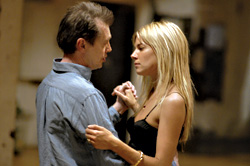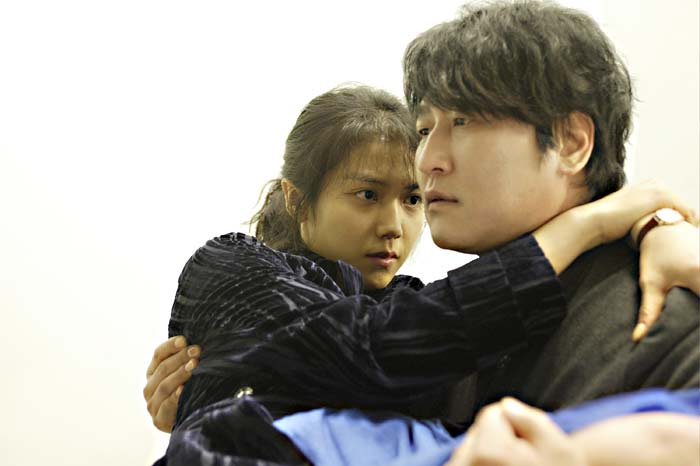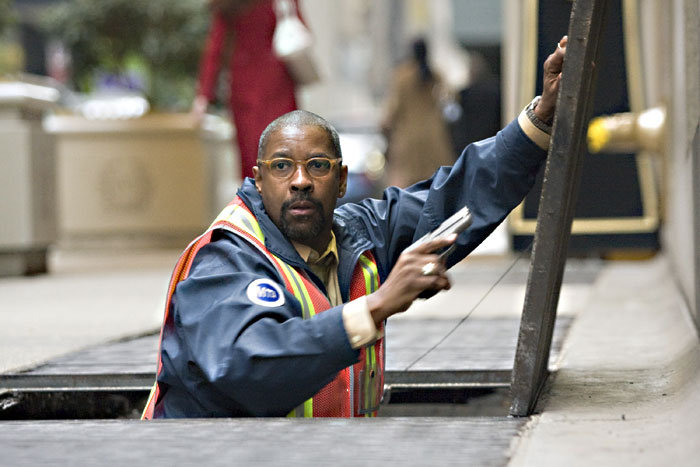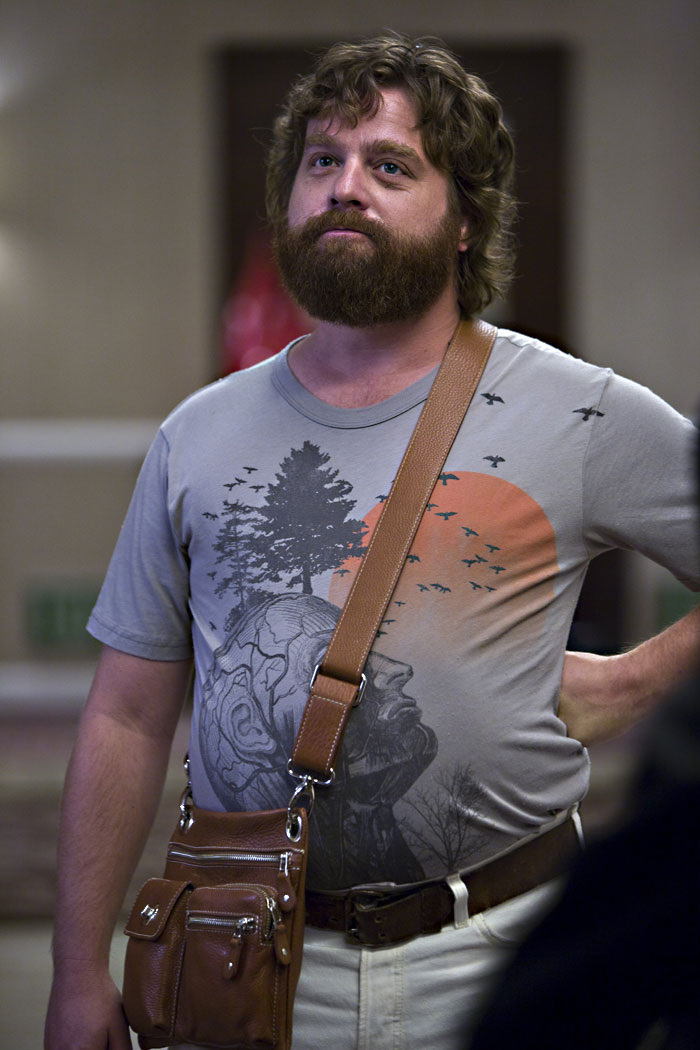Steve Buscemi the director is nothing like the art-damaged auteur Buscemi the actor played in 1995’s Living in Oblivion. No dry ice and dwarves for the victim of the cinema’s most celebrated woodchipper massacre, who as a filmmaker inhabits tight spaces (an ice-cream truck, a prison cell) and trapped lives like a termite. Give him an episode of The Sopranos such as the classic “Pine Barrens,” and he emerges with an hour of goomba Beckett that shows all his strengths—chiefly, a pleasure in working closely with actors, embedding characters in locations and situations with few ways out, and watching them tunnel toward the light.
Interview, Buscemi’s second feature as both director and star (following 1996’s Trees Lounge), takes about 20 minutes to restrict the world to a single room, but once it arrives the action seems to be held there by the pull of a cold sun. Buscemi plays a shabby ex–war correspondent with the fromage-scented name Pierre Peters, punished for some unnamed transgression by a demotion to celebrity puff pieces. Into the prearranged meeting spot flounces Katya (Sienna Miller), a prime-time soap diva whose (after dark, indoor) shades fail to deflect Pierre’s instant contempt. He sizes her up as a vacant Hilton, she coolly reads his career slide; obscenities are exchanged; interviewer and interviewee part early and gladly—only to be reunited by a car crash when Katya’s killer smile distracts Pierre’s cabbie.
Katya whisks him up to her place. Would a hot starlet really usher this dweeby parasite up to her loft? Not without Tony Montana’s stash of coke. But Pierre has one advantage: the unquenchable fascination the famous have with the one person in the room who doesn’t love them. Under the guise of extending the interview, he goads the liquored-up Katya into working her seductress moves on him, leveling his Mr. Limpet gaze at her while using the can’t-fail aphrodisiac of pretending she’s not his type. With her Chihuahua-yap of a cell tone to mark the periods, the game is on.
As director, Buscemi is confined by the unusual terms of the project. Interview is a remake of a 2003 drama by Dutch provocateur Theo van Gogh, who planned to remake this and two other of his features in English before he was murdered by an Islamic extremist in 2004. English-language remakes are generally a European filmmaker’s surest ticket to obscurity, but Buscemi has honored his intent anyway, retaining not only van Gogh’s cinematographer, Thomas Kist, but also his shooting style of using three cameras to cover a scene simultaneously.
The result, though anchored mostly to a single set cleverly sectioned by hammocks, curtains, and a kitchen bar, is the least concrete and most artificial of Buscemi’s films. But that’s as much because of the situation as Buscemi and David Schechter’s slippery script. Star profiles are essentially hostage negotiations, a bartering of self-respect for access: How little can the subject reveal, and still make the interviewer think he has a scoop? Buscemi and Schechter heighten this head game, making the Pierre-Katya “interview” a transaction in which each party means to screw the other, literally and figuratively. The characters’ whip-smart monologues, accusatory and confessional, lash both ways: Are they lying to themselves or each other, or just to us?
So, too, the three-camera system permits the same kind of fluidity Robert Altman achieved in his stage-play adaptations, along with the same staginess. Though Buscemi’s brisk direction literally moves the action around the apartment, you’re always aware how he’s keeping it moving. And yet, for these characters, there’s no real life anymore—just a floating acting exercise that shifts from public (Miller nails feigned sincerity to the couple whose restaurant table she commandeers) to private.
Interview starts by playing on our pieties about “serious” journalists vs. celebrity airheads, but the actors keep our sympathies—and our repulsion—shifting. On one viewing, Miller’s portfolio-of-mood-swings performance seems overdeliberate: You can almost hear the voice in her head whisper, Now spontaneously climb on the counter and flex those legs, a beat before she does it. But for Katya, this is an acting exercise. And in light of the movie’s closing twist—a parting nut shot of Mametesque nastiness that reveals which player has been played all along—Miller’s calculation looks like a subtle masterstroke. Buscemi the actor whittles Pierre’s vanity to a nub and then erases it altogether. The ending shows that the characters deserve each other. At the closest point to a moment of truth between these two practicing liars, Katya drops Pierre’s camcorder; it stares sideways into a TV screen, creating mirrored screens that recede into eternity with nothing inside. That brief shot is Interview in an image.








